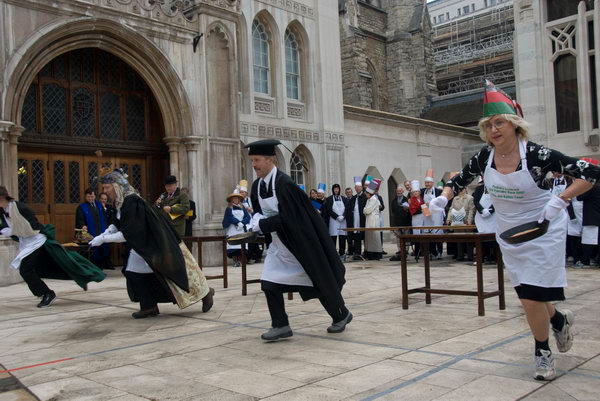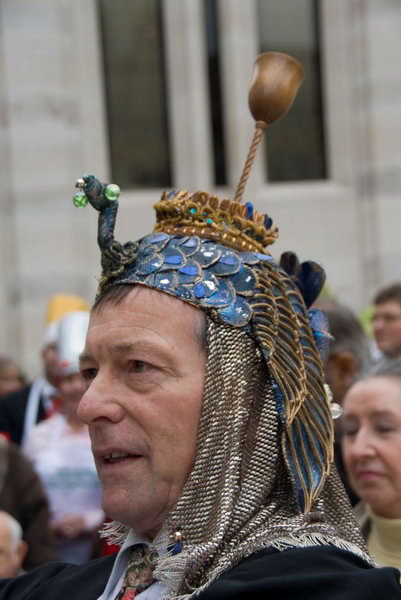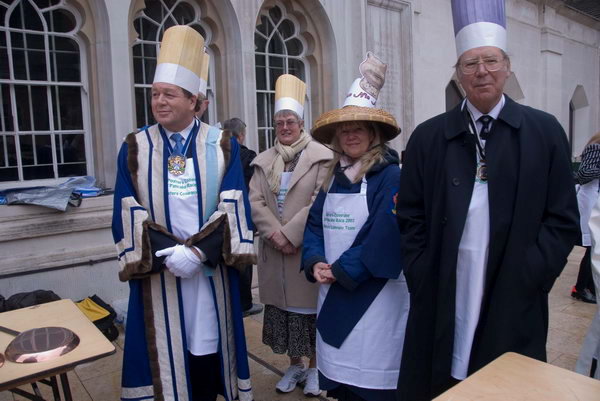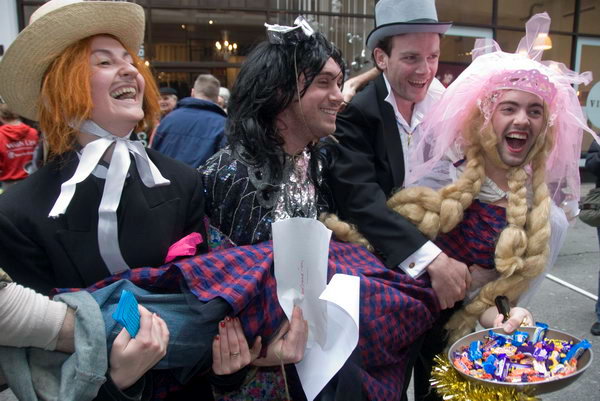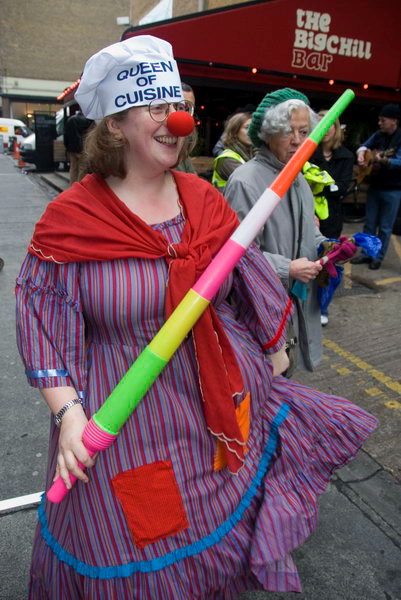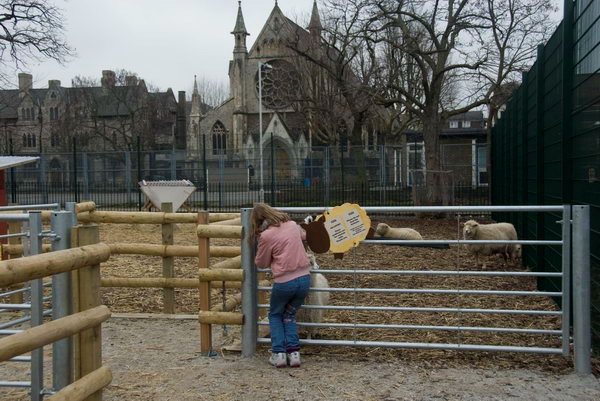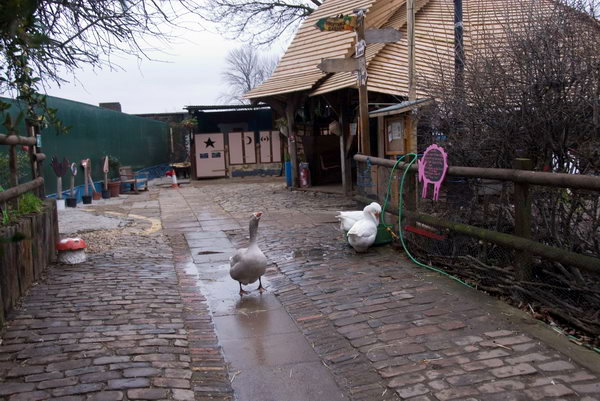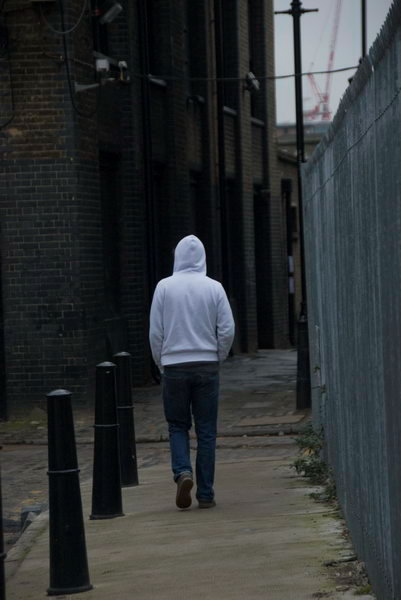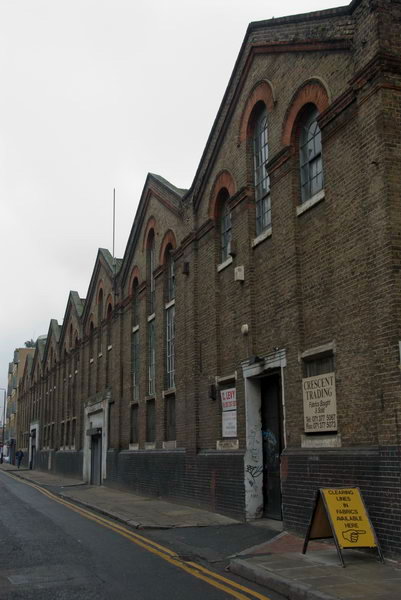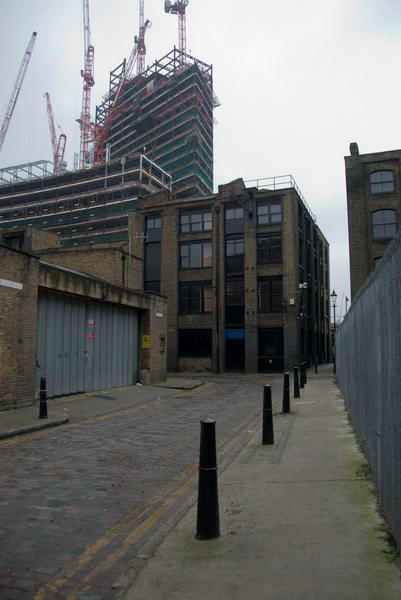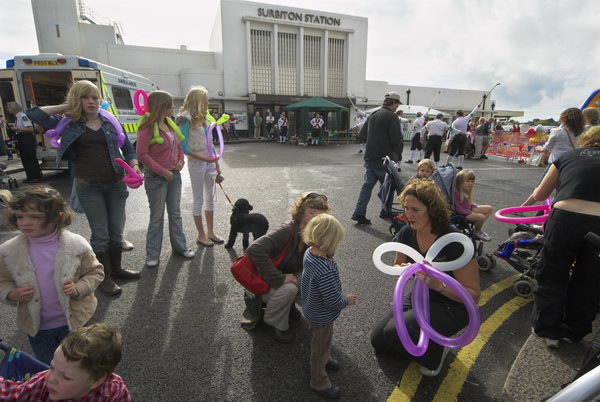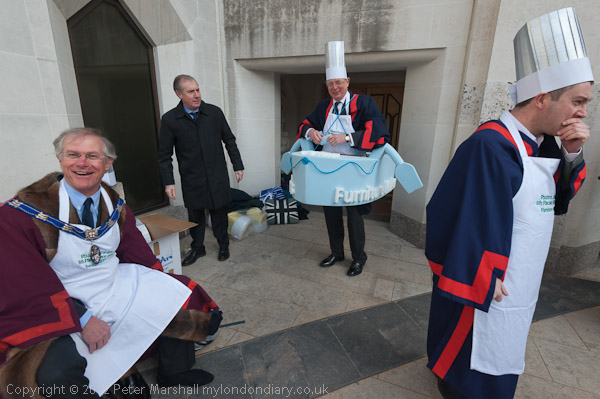
Back in 2012, Shrove Tuesday also fell on February 21st. The annual date depends on the date for Easter, calculated by an esoteric formula, the computus, agreed in AD395, which makes it first Sunday after the Paschal full moon, the first full moon after the fixed approximation of the March Equinox, 21 March. The actual date differs between the western Christian tradition (Protestant and Catholic) which uses the Gregorian calendar introduced in 1582 and the eastern Orthodox churches which stuck with the Julian.
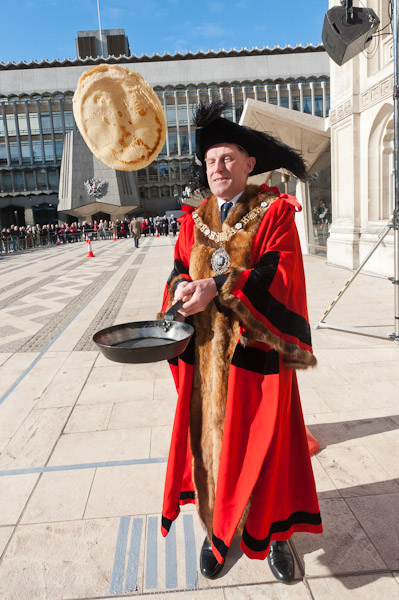
Of course historically its more complex than this, but fortunately we don’t need to bother about it, as the annual dates are marked in calendars published in print or online. Shrove or Pancake Tuesday is always 47 days before Easter Sunday, and the ecclesiastically more important day that follows, Ash Wednesday, is the first day of Lent.
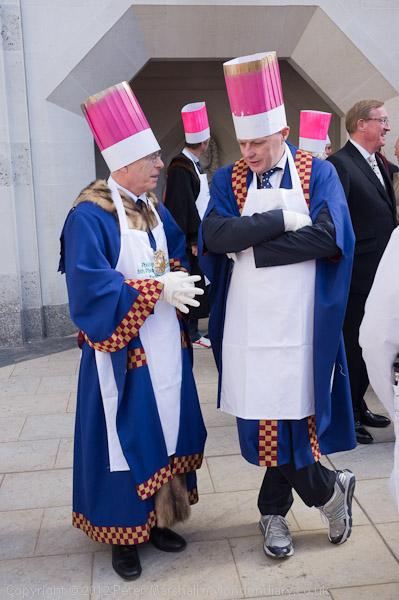
Few of us still give up things for Lent, though some still stop eating things like chocolate or biscuits, but it used to be a much more serious and widespread observance. Making pancakes was simply a way to use up eggs, milk and fat before the start of Lent and it was also an occasion for a bit of fun – hence pancake races.
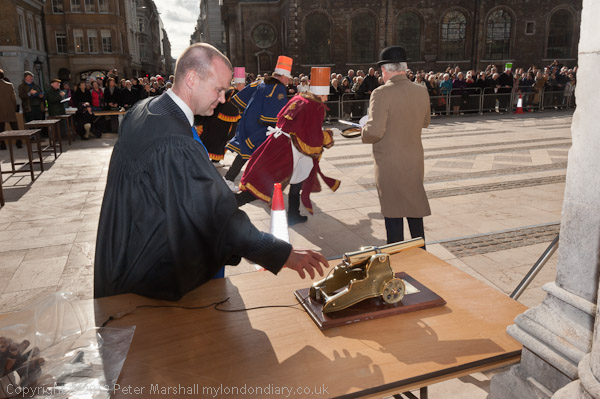
But there was also a more serious side to Shrove Tuesday, with people attending church and confessing their sins to a priest and being assigned appropriate penance, after which they were absolved from their sins, a practice known as shriving.
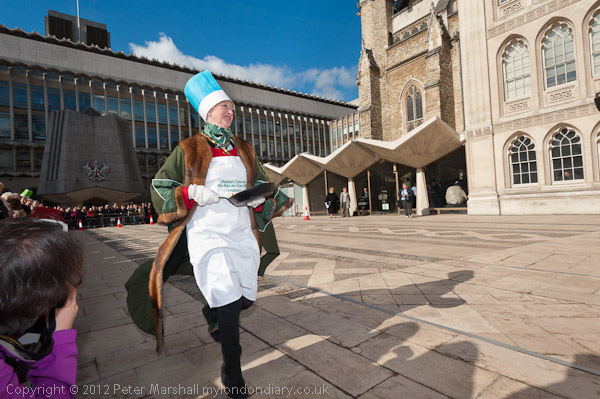
Until relatively recently, pancake races were only held in a few villages, reputed to have their origin in 1445 at Olney in Buckinghamshire, a few miles north of Milton Keynes, when a local housewife was still making her pancakes when the church bell for shriving rang, and she ran to the church holding her pan.
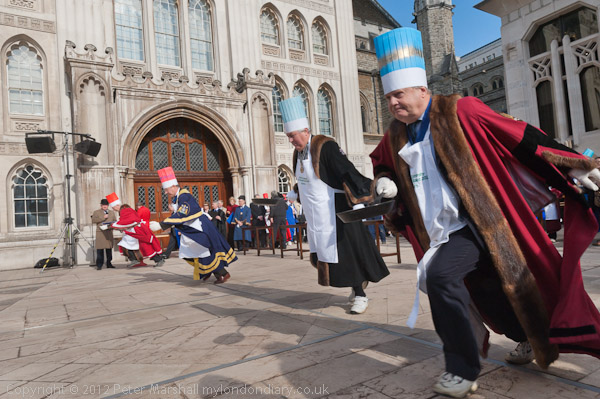
Earlier in origin were mob football games with large crowds taking place and streets and commons, sometimes between goals large distances apart, which sometimes caused a great deal of chaos and injury. In 1835 football was banned on public highways by Act of Parliament, and the practice has largely died out, though still celebrated in a few towns around the country.
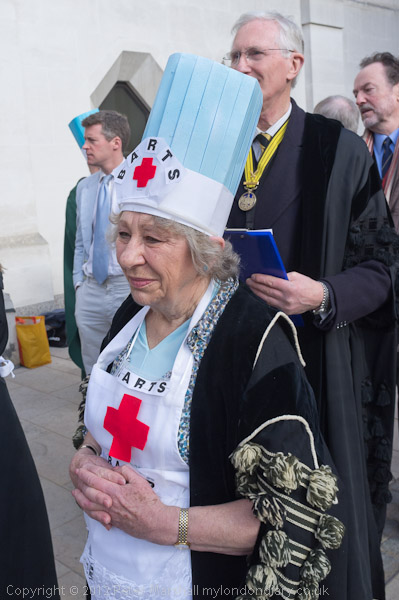
Pancake races have come back in a big way this century, often as charity events such as that which takes place in Guildhall Yard in the City of London. The races here, which are between members of the various City of London Livery companies, where begun by the Worshipful Company of Poulters in 2004 and raise money for the annual Lord Mayor’s charity.
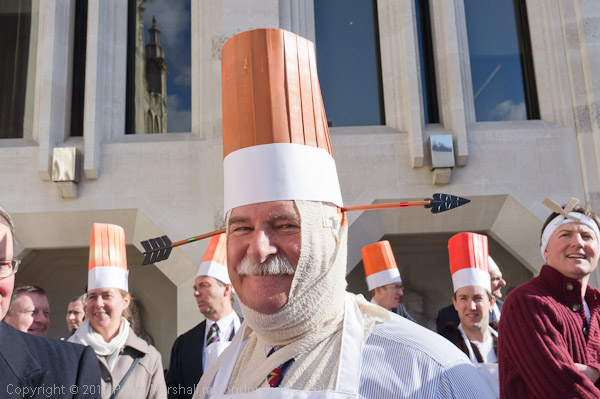
I’ve several times written more about what goes on in these races on My London Dairy, including in 2012 and won’t go into more detail here. But its interest is very much in the way that the City lets its hair down a little and in the hugely competitive spirit which has perhaps made the City what it is – for better or often for worse.
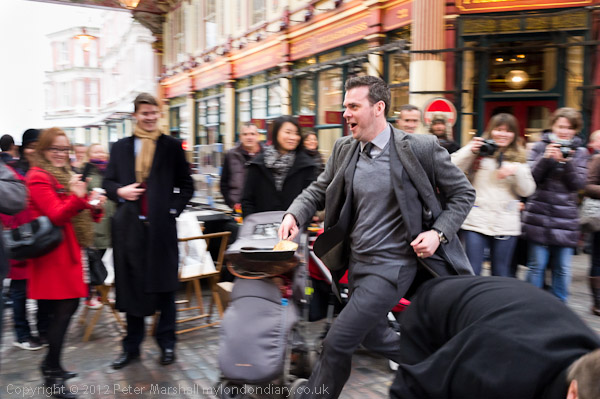
The other pancake race I photographed in the City in 2012 was very different, although those taking part were also workers in the city. This is very much a fun event, organised by businesses in Leadenhall Market, particularly the Lamb Tavern which provided the prizes.
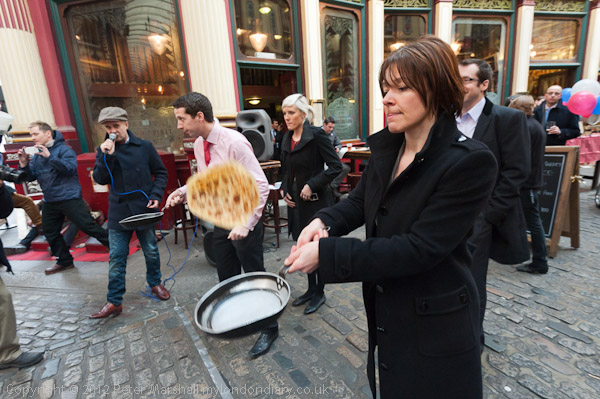
There has been a market here since 1309, though the current structure is splendidly Victorian from 1881, finely restored in 1991. The alley on which the races take place is a little narrow and hard to keep clear for the races as tourists wander through and customers go into the shops on each side. There was only room for two teams to compete in any race, which were run as relays with three legs.
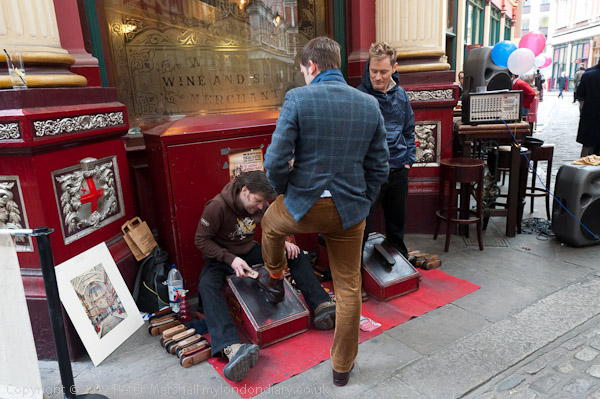
The race was first held here only in 2011, and the contestants are teams from local offices and businesses in and around the market. In 2012 a number of heats eliminated all but a team from the shoe-shine stand on the corner by the Lamb Tavern and another from a nearby cheese shop.
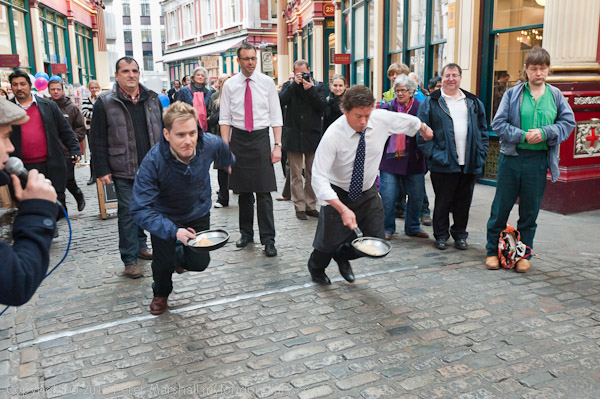
But the final provided a surprise with the cheese shop team making no effort to win and simply walking the course as they preferred the second prize of £50 to spend at the Lamb Tavern bar to the first which was a £75 voucher for the pub’s restaurant. After some haggling the Lamb called for a rerun promising both teams a bar tab, and there was then a hard fought battle battle for the honour of winning, won narrowly for the second year in the short history of the race by the team from the shoe stall.
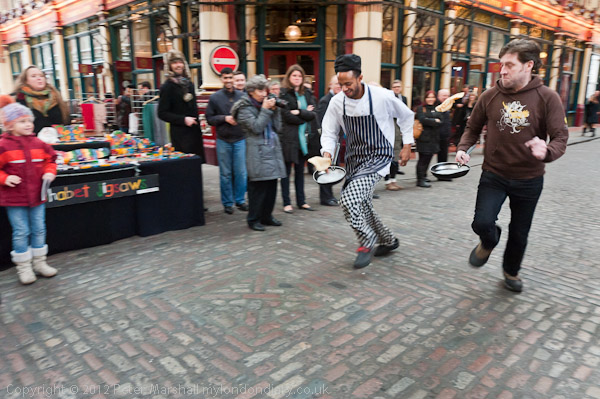
I won’t bother to go and photograph the races this year, either these or several others around London which I’ve also photographed in some past years. The Guildhall event has become rather more organised and attended by many, many more photographers making getting good pictures almost impossible and accreditation – which I can’t be bothered with – essential. And while I’ll certainly return to Leadenhall Market and the Lamb Tavern, I’ll do it again (as I did a couple of months back) on a day there are no races and it is less crowded.
Pancakes in the City – Leadenhall Market
Pancakes in the City – Guildhall
